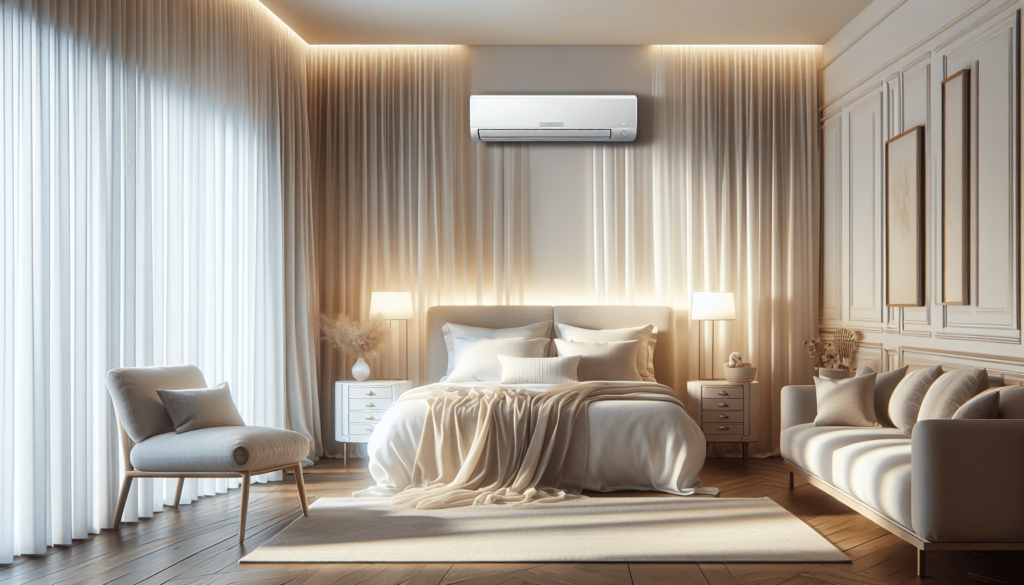Welcome to a comprehensive guide on understanding mini split sound levels and selecting a quiet system for your home. In this article, you will learn about the factors that contribute to noise levels in mini split systems, as well as tips on how to choose a unit that will provide you with a peaceful and quiet living environment. By the end of this read, you will be equipped with the knowledge needed to make an informed decision when it comes to selecting the perfect mini split system for your home.
Have you ever wondered how quiet mini split systems can be for your home?
When it comes to choosing a mini split system for your home, one important factor to consider is the sound levels it produces. No one wants to be bothered by a loud buzzing or humming noise, especially when trying to relax or focus at home. This article will help you understand mini split sound levels and provide tips on how to choose a quiet system for your home.

This image is property of pixabay.com.
What are mini split sound levels?
Mini split sound levels refer to the amount of noise produced by the indoor and outdoor units of a mini split system. The sound levels are measured in decibels (dB), with lower decibel levels indicating quieter operation. It’s important to consider both the indoor and outdoor sound levels when choosing a mini split system for your home.
Why is it important to consider sound levels?
Considering sound levels is crucial because no one wants to be disturbed by a noisy HVAC system in their home. High sound levels can be distracting, disruptive, and affect the overall comfort of your living space. By choosing a mini split system with low sound levels, you can enjoy a quieter and more peaceful environment in your home.
How are mini split sound levels measured?
Mini split sound levels are typically measured in decibels (dB), which is a unit used to quantify the intensity of sound. Decibels are measured on a logarithmic scale, which means that a small change in decibel levels can result in a significant difference in perceived noise.
Understanding decibel levels
Here is a general guideline to help you understand decibel levels and their corresponding noise levels:
- 0 dB: The threshold of hearing.
- 20 dB: Whispering at 5 feet.
- 60 dB: Normal conversation.
- 80 dB: Traffic noise, alarm clock.
- 100 dB: Chainsaw, leaf blower.
- 120 dB: Rock concert, thunderclap.

This image is property of pixabay.com.
What are typical sound levels for mini split systems?
Mini split systems typically have sound levels ranging from 20 to 60 decibels for indoor units and 50 to 70 decibels for outdoor units. These levels can vary depending on factors such as the size of the unit, the type of compressor used, and the speed of the fans.
Comparing sound levels
Here is a comparison of typical sound levels for different scenarios to give you an idea of what to expect from a mini split system:
| Scenario | Sound Level (dB) |
|---|---|
| Indoor conversation | 40-60 |
| Rainfall | 50-70 |
| Quiet suburb | 50-60 |
| Dishwasher in use | 50-75 |
| Average mini split unit | 20-60 (indoor) 50-70 (outdoor) |

This image is property of pixabay.com.
Tips for choosing a quiet mini split system for your home
Now that you understand the importance of sound levels and how they are measured, here are some tips to help you choose a quiet mini split system for your home:
1. Look for low decibel ratings
When shopping for a mini split system, pay attention to the decibel ratings of both the indoor and outdoor units. Look for units that have lower decibel levels, especially if noise is a concern for you. Quieter units typically have decibel ratings in the lower end of the range mentioned earlier.
2. Consider variable-speed compressors
Mini split systems with variable-speed compressors can operate at lower speeds, resulting in quieter operation. These systems can adjust the compressor speed based on the cooling or heating needs of your home, reducing noise levels during times of lower demand.
3. Choose insulated refrigerant lines
Insulated refrigerant lines can help reduce noise generated by the flow of refrigerant between the indoor and outdoor units. By choosing a mini split system with insulated lines, you can minimize the transmission of sound and enjoy a quieter operation.
4. Mount the outdoor unit on a sound-absorbing pad
To further reduce noise from the outdoor unit, consider mounting it on a sound-absorbing pad. This can help dampen vibrations and minimize sound transmission to your home, creating a quieter environment overall.
5. Maintain your mini split system regularly
Regular maintenance is essential for keeping your mini split system running smoothly and quietly. Be sure to clean or replace air filters, check for any loose components, and schedule professional maintenance as needed to ensure optimal performance and noise levels.

Conclusion
Choosing a mini split system with low sound levels is essential for creating a quiet and comfortable living environment in your home. By considering factors such as decibel ratings, compressor type, and insulation, you can select a system that meets your heating and cooling needs without compromising on peace and quiet. Keep these tips in mind when shopping for a mini split system and enjoy a quieter home all year round.


